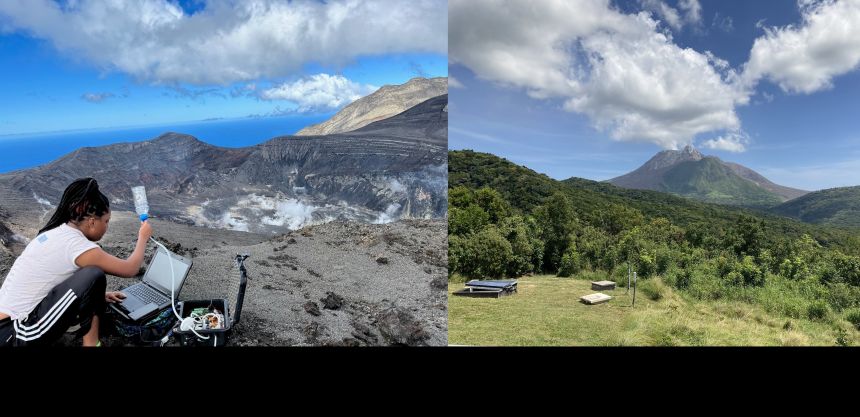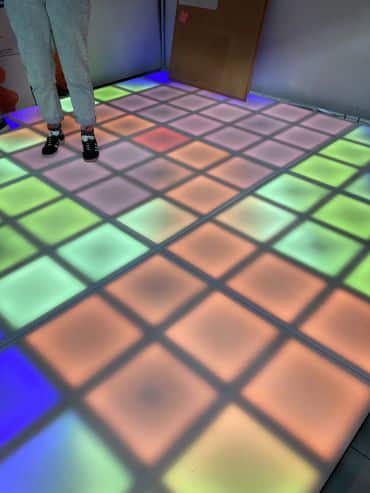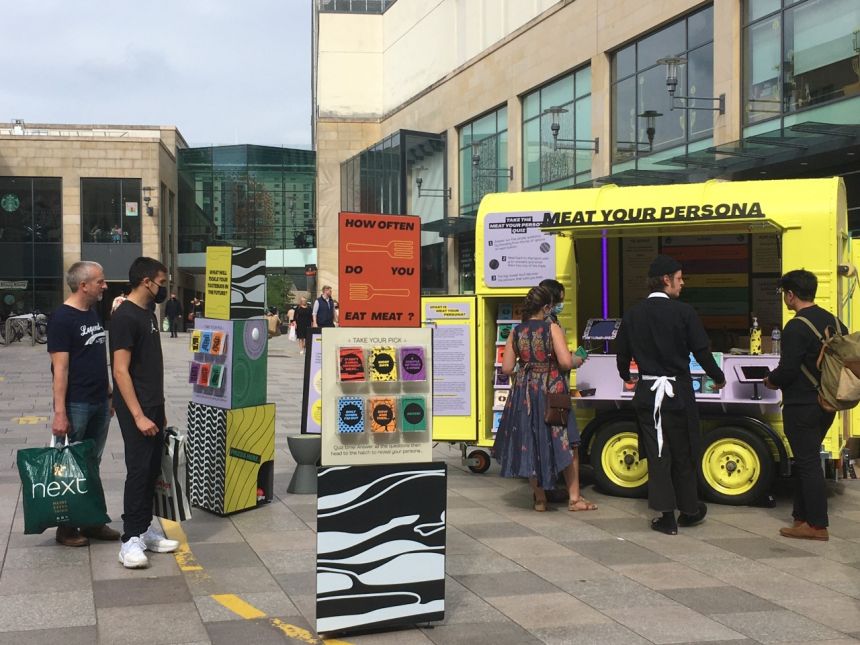Oxford University’s volcanic research showcased at Royal Society’s Summer Science Exhibition
Friday 23rd Jun 2023, 1.59pm
We want our exhibit to inspire visitors to think about how they experience and make sense of the uncertain world around us; and to show the value of sharing stories about how people have coped with crises in the past, so that we can all learn how to cope better with them in the future.
Professor David Pyle, Department of Earth Sciences, University of Oxford
The Royal Society’s annual Summer Science Exhibition is one of the most prestigious science public engagement events, having taken place in the heart of central London for more than 200 years. Between Tuesday 4 – Sunday 9 July, more than 10,000 visitors are expected to attend the week-long, free festival that will showcase the latest cutting-edge science from across the UK.
Together with colleagues from the University of East Anglia and University of the West Indies, researchers from the University of Oxford’s Department of Earth Sciences will be leading one of the nine flagship exhibits this year, called Sensing Volcanoes. This draws on Oxford’s world-leading expertise in volcanology to illustrate the realities of living in the shadow of a volcano.
Exhibit lead Professor David Pyle, from Oxford’s Department of Earth Sciences, said: ‘We have created a multi-sensory and hands-on exhibit that will show how people have tried to sense or detect change at restless volcanoes both through observation and measurement; and how scientists use sensing data to understand what is happening underground.’
A key attraction will be the ‘The Imaginarium’: a light up floor installation which simulates what happens during a volcanic eruption, both the hazards at the surface and the magmatic processes taking place deep underground. Produced by a collaboration between scientists and artists using real data from the 2020-21 eruption of La Soufrière St Vincent, the installation reconstructs the sub-surface movements of magma and gases before and during the eruption. This will enable visitors to experience the seismic shifts of an active Caribbean volcano before playing ‘The Floor is Magma!’: an interactive game that tests decision-making skills during a simulated eruption.
 (Left) Leanka Henry, geologist at the La Soufrière St Vincent monitoring unit sets up gas monitoring equipment on the rim of the crater produced after the 2021 explosive eruption of the volcano. Credit: Bridie Davies at UEA. (Right) View of the steaming summit of the Soufriere Hills Volcano, Montserrat, in March 2023. Credit: David Pyle.
(Left) Leanka Henry, geologist at the La Soufrière St Vincent monitoring unit sets up gas monitoring equipment on the rim of the crater produced after the 2021 explosive eruption of the volcano. Credit: Bridie Davies at UEA. (Right) View of the steaming summit of the Soufriere Hills Volcano, Montserrat, in March 2023. Credit: David Pyle.
Visitors will also have the opportunity to:
- Experience the sounds, smells, and sensations that act as signals of volcanic and magmatic processes through a range of sensory activities;
- Explore how the instruments used to detect signals from volcanoes have evolved over the last 150 years, with the opportunity to try some for themselves;
- Listen to a selection of stories from the people of Montserrat and St Vincent, including eye-witness accounts of the volcanic eruptions of 1890 and 2000.
 The light up floor of the Imaginarium. Credit: David Pyle.
The light up floor of the Imaginarium. Credit: David Pyle.
The exhibition has been developed as part of Curating Crises, a collaboration between researchers at the University of the West Indies and UK institutes to investigate the histories of volcanic crises in the Caribbean. By uncovering the previously hidden roles of local and experiential knowledge in shaping responses to volcanic crises, this work is acting as a lens to explore more widely how colonial influences have impacted the creation and circulation of knowledge.
Professor Pyle added: ‘The Curating Crises project is helping us to explore and share stories of how people have responded to volcanic eruptions in the past. This helps us better understand how scientists, public officials, and communities can work together to cope with uncertainties in the face of the threats from natural hazards, and to prepare for future events.’
Meanwhile, on the forecourt outside the Royal Society’s headquarters, researchers from the University of Oxford’s Livestock Environment and People (LEAP) programme will be inviting people to ‘Meat Your Persona’ and discover more about how their meat consumption might impact their health and the environment. Housed in an eye-catching yellow horsebox, the installation features an engaging quiz, interactive activities, plant-based recipe cards, and summary factsheets of LEAP’s research.
Lucy Yates, Public Engagement Coordinator for LEAP, said: ‘The Royal Society Summer Exhibition will be a great opportunity for our researchers to find out what people know about the impact of their diets and to answer some of those tricky questions visitors might have about the most significant changes we can make to what we eat in order to look after human and planetary health.’
The Royal Society’s Summer Science Exhibition takes place between Tuesday 4 – Sunday 9 July at 6 – 9 Carlton House Terrace, London, SW1Y 5AG. Entry is free and no booking is required. Full information can be found on the Society’s website.
You can hear Professor Pyle describing the Imaginarium when it premiered at the 2023 Norwich Science Festival in this episode of the Coffee and Geography podcast.
 Meat Your Persona on tour in Cardiff. Credit: Lucy Yates.
Meat Your Persona on tour in Cardiff. Credit: Lucy Yates.
